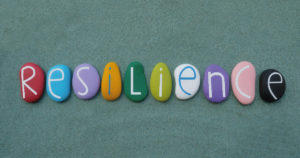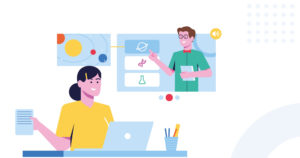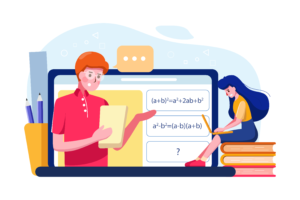Este artículo fue publicado en: mayo 1, 2015
Universal Design for Learning (UDL) provides the opportunity for all students to access, participate in, and progress in the general-education curriculum by reducing barriers to instruction. Learn more about how UDL offers options for how information is presented, how students respond or demonstrate their knowledge and skills, and how students are engaged in learning.
Katherine, a speech-language pathologist in a large elementary school, works hard to provide appropriate and relevant services to students in general education classrooms. She doesn’t do much pull-out, instead preferring to work in classrooms using adapted classroom materials. As a result, she spends a lot of time modifying materials and developing personalized resources for specific students. As she packs up her bag filled with paperwork to finish at home, she thinks, «There must be a better way to meet the needs of all the students on my caseload.»
Katherine’s situation is common for school-based SLPs. All of her students have different needs, abilities, and preferences. Neither their strengths nor their barriers to learning are always obvious. They tend to be the students «in the margins» — those who need different kinds of supports and scaffolds to learn (Rose, Meyer, & Hitchcock, 2005). In fact, they are a heterogeneous group struggling to learn for a wide variety of reasons:
- Sensory or physical disabilities.
- Emotional or behavioral challenges.
- Learning disabilities or reading difficulties.
- Autism spectrum disorders.
- Attention deficit hyperactivity disorder.
- Lack of appropriate background knowledge.
- English-language barriers.
Not so long ago, these students would be educated primarily in self-contained or separate classes or schools (Rose et al., 2005). Today, most of these students are in general-education classrooms and expected to progress in the general-education curriculum. Schools and educators are accountable for real progress and demonstrable learning outcomes.
Unfortunately, the typical curriculum — usually centered on printed materials — is designed for a homogeneous group of students and is not able to meet different learner needs. That design puts the burden on learners to adapt to inflexible curricula and on educators, like Katherine, to create modified materials personalized to the needs of each student. The real challenge for educators, then, is to provide learning opportunities in the general-education curriculum that are inclusive and effective for all students.
Universal Design for Learning (UDL), defined in the Higher Education Opportunity Act of 2008 as a «scientifically valid framework for guiding educational practice,» turns this situation around. UDL puts the burden of change where it belongs: on the curriculum itself (Higher Education Opportunity Act of 2008). By facilitating the design and implementation of a flexible, responsive curriculum, UDL offers options for how information is presented, how students respond or demonstrate their knowledge and skills, and how students are engaged in learning. UDL implementation provides the opportunity for all students to access, participate in, and progress in the general-education curriculum by reducing barriers to instruction.
Origins of UDL
Índice
The roots of UDL are found in early civil rights and special education legislation that emphasized the right of all students to a free, appropriate public education in the least restrictive environment (Hitchcock, Meyer, Rose, & Jackson, 2005). The UDL framework was conceived by researchers at the Center for Applied Special Technologies (CAST) in the late 1980s as the result of the alignment of three conceptual shifts: advancements in architectural design, developments in education technology, and discoveries from brain research.
Te puede interesar
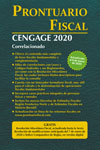 Prontuario Fiscal 2020
Prontuario Fiscal 2020Ir al Prontuario Fiscal 2021 -> En 2020 entrarán en vigor nuevas y numerosas disposiciones fiscales en materias tan importantes...
Universal design: After the passage of the Americans with Disabilities Act (ADA) in the 1990s, schools and other public buildings were retrofitted with ramps and other architectural features to provide physical access. These changes were an expensive afterthought rather than proactive design. Leaders in the field of architecture suggested a more cost-effective strategy — designing the buildings from the beginning with flexible Universal Design principles in mind so that all users could have access.
Digitized text: At the same time, technological advances allowed alternatives to «one-size-fits-all» academic materials that used only one fixed medium — print. Access to computers was becoming more common in schools, and assistive technologies that allowed educators and students to manipulate text resulted in the availability of flexible instructional options. Now, text could be easily enlarged, simplified, summarized, highlighted, translated, converted to speech, graphically represented, and supported through accessible, digital materials.
Brain research on learning networks: Concurrently, brain imaging conducted while individuals were engaged in learning tasks (e.g., reading, writing) revealed three networks at work in the brain during learning: recognition network (the «what» of learning), strategic network (the «how» of learning), and affective network (the «why» of learning) (Rose & Meyer, 2002).
Influenced by architectural Universal Design principles, the accessibility and flexibility offered by digitized text, and the conceptualization of three learning networks, innovators at CAST developed what they called «Universal Design for Learning.»
UDL principles
The UDL framework values diversity through proactive design of an inclusive curriculum, thereby eliminating or reducing barriers to academic success. Initially proposed as a means for including students with disabilities in the general-education classroom, it is now better understood as a general-education initiative that improves outcomes for all learners.
UDL addresses the three learning networks within a broadly defined concept of curriculum that includes goals, materials, methods, and assessment (Hitchcock et al., 2005). According to the following three UDL principles, each area of the curriculum should provide multiple, varied, and flexible options for representation, expression, and engagement:
- Principle 1: Provide multiple means of representation (recognition network).
- Principle 2: Provide multiple means of action and expression (strategic network).
- Principle 3: Provide multiple means of engagement (affective network).
The four interrelated components of the UDL curriculum require further explanation.
Te puede interesar
 Cálculo de Una Variable: Trascendentes Tempranas
Cálculo de Una Variable: Trascendentes TempranasEl estudio del cálculo ayuda a los estudiantes a comprender la disciplina de manera práctica. El modo más importante de...
- Goals are typically described as learning expectations. They represent the knowledge, concepts, and skills students need to master and are usually aligned to state standards. Recent national discussions about Common Core Standards have heightened the critical importance of linking goals in Individualized Education Programs (IEPs) with state standards and classroom expectations.
- Methods are generally defined as the instructional strategies used by educators to support student learning. Methods should be evidence-based and supported by an analysis of learner variability. UDL methods are flexible and adjusted through consistent monitoring of student progress.
- Materials are the media used to present content and demonstrate learning. UDL materials offer multiple media options and include embedded supports.
- Assessment within the UDL framework refers to the process of gathering information about a learner’s progress using a variety of methods and materials. UDL assessments are particularly concerned with accurately measuring learner knowledge, skills, and engagement by maintaining construct relevance and reducing or eliminating irrelevant or distracting elements that interfere with the assessment’s validity.
The purpose of UDL implementation is to create expert learners — learners who can assess their own learning needs, monitor their own progress, and regulate and sustain their interest, effort, and persistence during a learning task. Many students learn within traditional classrooms with a traditional curriculum. However, most need supports and/or scaffolds to become expert learners.
UDL in action
Further examination of what UDL in action looks like requires an understanding of UDL application steps and a review of the available supports, such as the UDL Guidelines.
Applying UDL within a classroom or for a caseload of students starts with three initial steps: define appropriate goals that allow for multiple means of attainment, assess diverse learner needs, and evaluate barriers that may exist within the current curriculum.
Defining appropriate goals: In today’s high-stakes accountability systems, standardized goals sometimes include the means for achieving the standard within the goal itself. For example, a goal that requires all students to «Identify the elements of fiction (problem, solution, character, and setting) and analyze how major events lead from problem to solution» (Massachusetts ELA Curriculum Frameworks, Standard 12) allows students flexibility in how they will meet this expectation. Conversely, a goal that requires all students to «Print with appropriate spacing between words and sentences» has only one rigid expected outcome because the means for demonstrating achievement of the standard is embedded in the goal and restricted to one medium of expression.
In establishing student goals, then, it is important that they are aligned to state standards yet also defined in a manner that allows students multiple ways to demonstate the goals have been met.
Assessing diverse learner needs: All learners have strengths, weaknesses, and preferred areas of interest within the context of the learning environment. Using a UDL lens, speech-language pathologists and other educators can identify the strengths, needs, and interests of individual students across the three learning networks (i.e., recognition, action and expression, engagement) and combine them into a UDL class/group profile. Who are these students? How do they learn best? What strengths, cultural backgrounds, learning styles, and interests do they bring to the learning situation? What forms of communication do they use? How do they execute a plan for learning? What are their talents?
Evaluating curriculum barriers: Most curricula are designed as if all students learn in the same way. In reality, the idea of a «typical» learner is a myth. Likewise, barriers to learning may not be present within students but rather in the intersection of students and the curriculum. By analyzing the characteristics outlined in a UDL class/group profile in light of the flexible methods and materials offered through a UDL approach, SLPs and other educators can move beyond identifying individual learning difficulties to focusing on and addressing the barriers that exist within the curriculum. When provided with the right tools for accessing and understanding information and content that is of interest, students with diverse learning profiles can find appropriate challenges, engage in the learning situation, and progress.
Te puede interesar
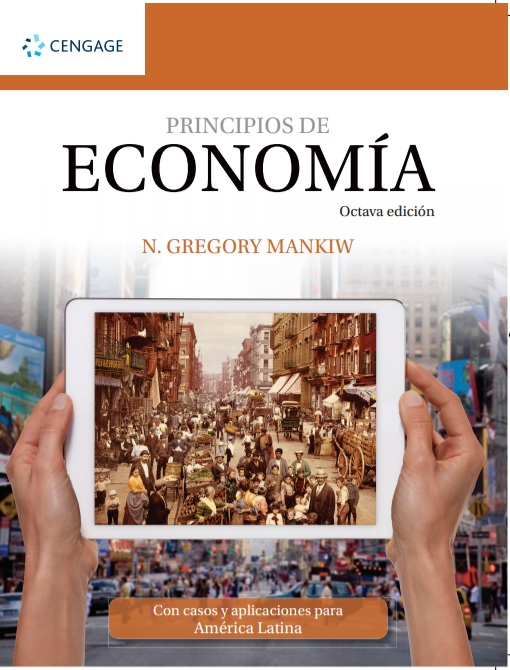 Principios de economía
Principios de economía¿Por qué debería usted estudiar economía? La razón es sencilla: le ayudará a comprender el mundo en que vive. Existen...
Meeting all students’ needs
The UDL framework provides a flexible, responsive curriculum that reduces or eliminates barriers to learning. Using a UDL approach, SLPs and other educators offer curriculum options that present information and content in varied ways, differentiate the manner in which learners can express what they know, and engage students in meaningful, authentic learning. With UDL, more students are:
- Engaged in their own education.
- Learning in greater breadth and depth.
- Achieving at higher levels.
- Motivated to continue learning.
Finally, UDL allows Katherine and other SLPs to teach effectively in diverse classrooms and spend more time on instruction facilitating learning rather than retrofitting a «one-size-fits-all» curriculum. The bottom line is: UDL helps educators meet the needs of all students.
See original text: http://bit.ly/1HUXXDz

